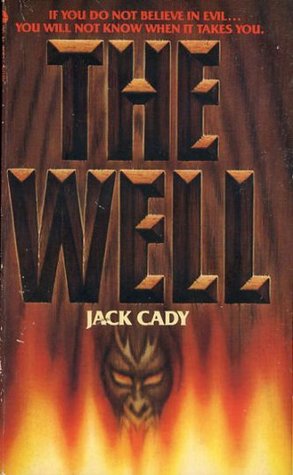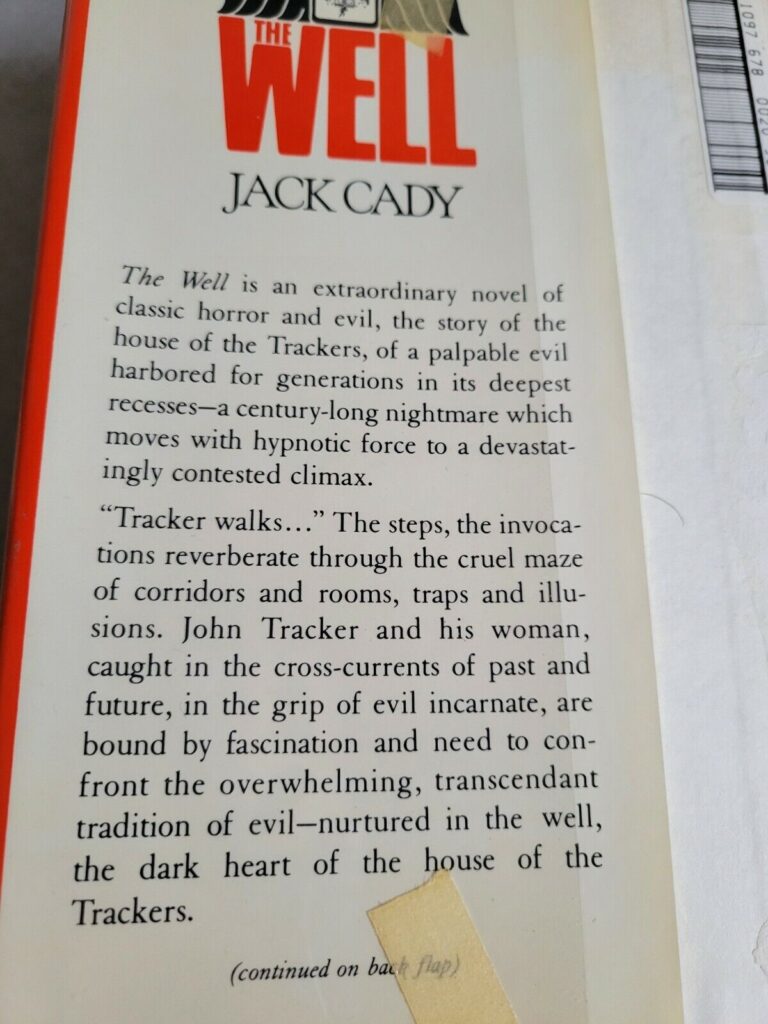 By JACK CADY (Avon; 1980/82)
By JACK CADY (Avon; 1980/82)
Let’s face it: haunted house novels by and large just aren’t that exciting. The widely acknowledged classic of the form, Shirley Jackson’s HAUNTING OF HILL HOUSE, essentially said everything there was to say in terms of haunted abodes, and its horrors were primarily of the psychological variety. Ditto THE TURN OF THE SCREW and THE SHINING, and also THE WELL by Jack Cady.
Cady’s novel isn’t particularly well known outside the literary horror community, but within it THE WELL is considered a masterpiece. The novel went through multiple editions in the early 1980s, was reprinted by Valancourt Books in the 2010s and has turned up on many a “Best of” list.
Cady’s novel isn’t particularly well known outside the literary horror community, but within it THE WELL is considered a masterpiece.
I’ve always been ambivalent about the novel. I admire it, certainly, as it’s a well written and intelligent tale that resolutely avoids shock effects (cheap or otherwise). That, alas, is a large part of the problem.
The protagonist is the 40-year-old John Tracker, identified throughout as, merely, “Tracker.” He’s a demolition contractor tasked with investigating his soon-to-be-razed Indiana based childhood home to make sure nobody is residing inside. Doing so isn’t nearly as easy as it seems, as this house (inspired by the tricked-out Winchester mansion in San Jose, CA) is a labyrinthine nightmare of traps and counter-traps. It’s a set-up that promises any number of possibilities, very few of which are utilized.
I’ve always been ambivalent about the novel.
It seems John’s great-grandfather Johan was a religious fanatic who built a trap in his house to “capture the devil.” His descendants, who included John’s grandfather Theophilus and his mentally ill father Justice, continued adding traps whose sheer proliferation ended up having an effect opposite to what was originally intended, keeping the “reality of evil incarnate” inside the abode and the opposing forces out.
Two other important participants in this drama are John’s 30-year-old Girlfriend Amy, with whom “Something beyond casual sex was happening,” and his ancient grandmother Vera, who’s “older than anyone else he had ever seen.” John takes Amy with him into the house, but both regret it, as she’s quickly overtaken by the evil within, which would appear to be using Vera, who John finds living in the house, as its vessel.
What happens to Amy isn’t especially graphic or upsetting, as subtlety is the book’s major attribute. I’ll give Jack Cady credit for not falling prey to the expected sappy horror novel romance intended to counterpoint the darkness; the relationship between John and Amy feels true-to-life, with neither entirely sure they’re in love with the other, and doesn’t rely on standard romance tropes—i.e. John is never called upon to save his better half from the evilness. His ultimate test, rather, is simply to maintain his reason within the accursed house, while snow accumulates outside, for as long as he can (Amy having by that point been sent away). Not exactly the stuff of jump-out-of-your-seat horror writing.
Which brings us to THE WELL’S ultimate shortcoming, which is the same as its major attribute: that it’s too smart and refined for its own good. Exploitation can be a good thing, especially when it comes to horror fiction, and it would have worked wonders for this book, which for all its smarts isn’t entirely satisfying.

